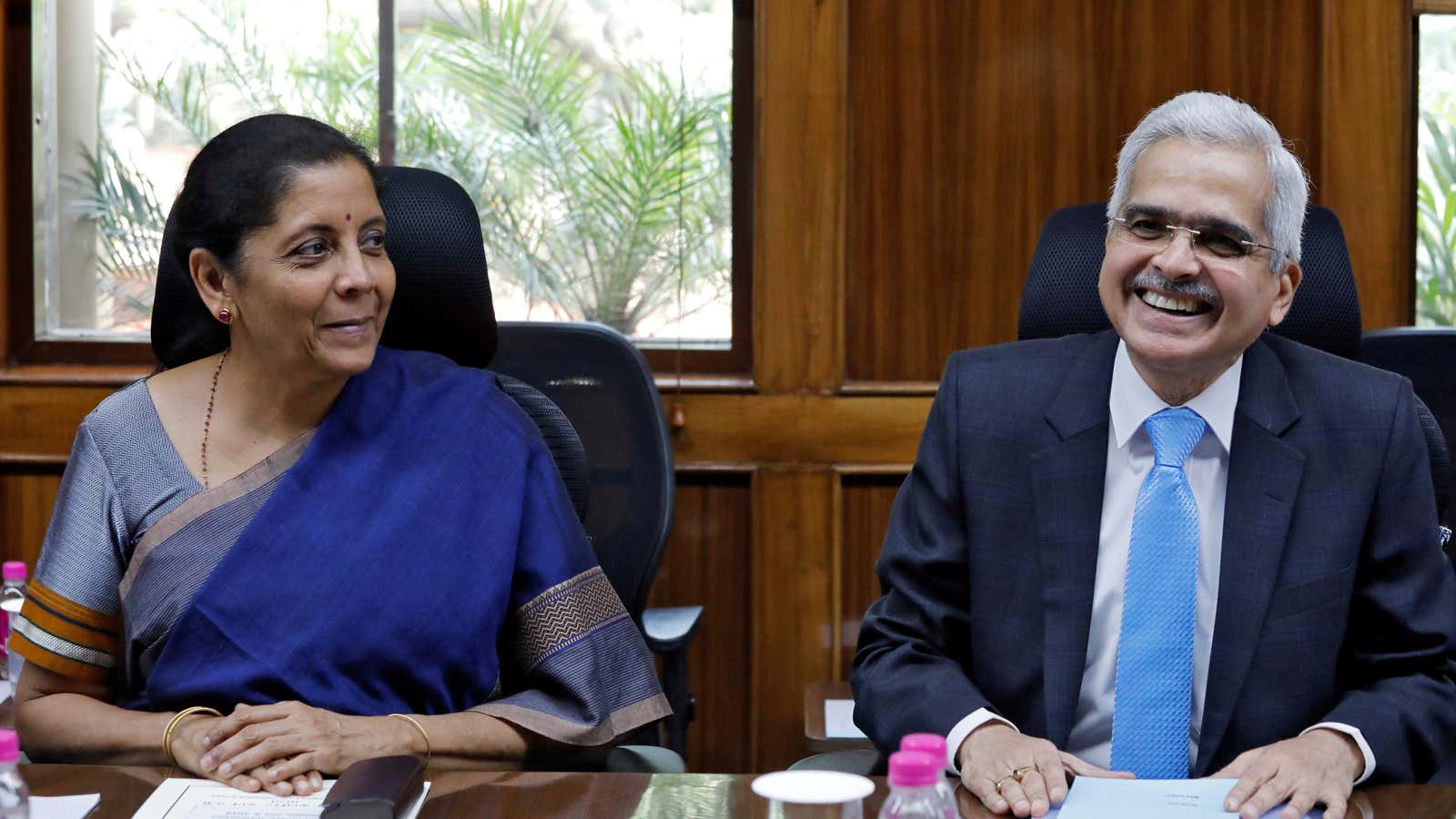It’s been a difficult time for India’s aviation sector.
Besides the sluggish economy, airlines have been burdened by rising costs of maintenance, high fuel prices, and mounting debt, among other things.
The industry will, therefore, keenly look to finance minister Nirmala Sitharaman for some relief as she presents her second union budget on Feb. 1.
Market leader IndiGo, for instance, has been struggling with surging maintenance costs. It posted its biggest-ever quarterly losses of Rs1,066 crore ($150.1 million) in the September quarter of the current financial year. At the time, the airline’s finance chief, Aditya Pandey, said it had leased over 50 of its old Airbus A320 Ceo planes owing to maintenance costs.
The sector has also turned unattractive for investors. Neither the grounded Jet Airways nor state-owned Air India, on the block currently, has yet attracted any interest from buyers.
Domestic air passenger growth has, meanwhile, plummetted from 18.6% in 2018 to 3.74% last year, the slowest pace in four years. “The grounding of Jet Airways in April and the Boeing crisis were one of the biggest deterrents to domestic travel growth last year,” said Alok Bajpai, CEO and co-founder of Gurugram-based travel portal Ixigo. “Travel-related bookings went down 10%-15% across the country in 2019 with metros affected the most.”
Tax relief
Bringing aviation turbine fuel (ATF) under the ambit of the goods and services tax (GST) has been a long-standing demand of the sector.
“With no sign of including jet fuel within GST in the near future, the government can come up with other ways to lower the impact of an increase in ATF prices on airlines,” Ashish Nainan, an analyst at Mumbai-based financial services firm Anand Rathi Group, told Quartz. “Levying a ‘specific rate’ of excise duty is one way (to decrease the tax burden),” said Nainan.
Petrol and diesel are taxed at specific rates of Rs21.6 and Rs15.8 per litre, respectively, regardless of fuel prices. ATF, on the other hand, is taxed at an 11% ad valorem rate. The difference is that the tax on ATF keeps increasing as global prices go up.
“The financial health of domestic airlines has deteriorated due to their inability to increase airfares despite high ATF prices,” says Kinjal Shah, an analyst at credit agency ICRA. “Sustenance of domestic airlines will become difficult during periods of high ATF prices and an unfavourable exchange rate movement.”
Stronger regional connectivity
IndiGo, SpiceJet, and GoAir have been announcing new routes to connect India’s non-metro cities under India’s Ude Desh Ka Aam Nagrik (UDAN). The scheme caps airfares on tier-2 and tier-3 routes.
“The budget is expected to reiterate its focus on improving regional connectivity through its regional connectivity scheme (RCS) and should make flying affordable to the masses by providing a favourable ecosystem,” believes Shah.
Connectivity to regional routes can also be increased by building stronger infrastructure. Experts hope the government will have provisions to build domestic infrastructure.
“India has established itself as one of the fastest-growing travel markets in the world and is poised to become the third-largest market by 2025 given the secular growth trends,” says Indroneel Dutt, CFO at travel portal Cleartrip. “It is essential to ensure that infrastructural inadequacies do not fetter the growth of the industry.”
Observers also expect the announcement of new airports. “The budget is likely to focus on the upgrade of airports in tier-2 cities through public-private-partnership (PPP) route,” Shah said. “Furthermore, it is likely to undertake expansion of existing airport capacities at some key airports.”
Hike in FDI
To hasten Air India’s divestment, foreign direct investment (FDI) must be increased in domestic carriers from the current 49%, suggest experts.
A liberalised FDI cap can assure investors of minimal government interference in future affairs, Bajpai said.
Doles for MRO sector
In her last budget, Sitharaman promised to “create a congenial atmosphere” for maintenance, repair, and overhaul (MRO) activities. However, not much was done since then.
“The guidelines for the MRO centre are still not clear. This time (the government) may share details of executing its plan to make India a centre for MRO activities,” said Nainan.
Other industry experts agree. “In line with the increasing thrust on ‘Make In India,’ the budget could focus on incentivising the MRO sector,” Shah said.
